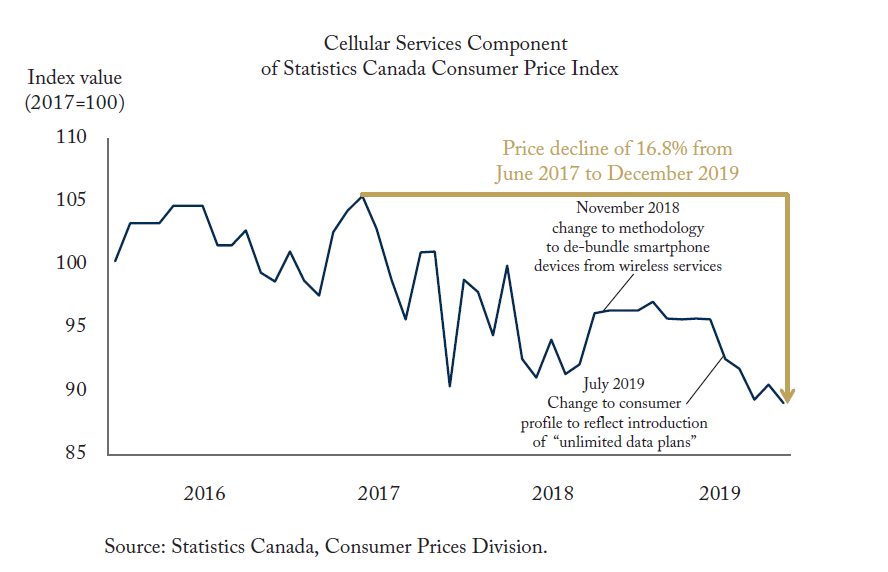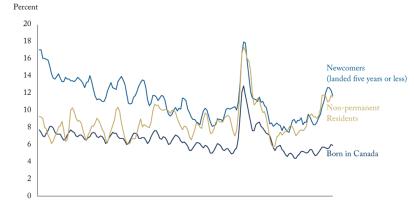In the recent Mandate Letter, the Prime Minister directed the Minister of Innovation, Science and Industry to “reduce the average cost of cellular phone bills in Canada by 25 percent” and “expand mobile virtual network operators (MVNO) in the market.” MVNOs do not operate wireless facilities themselves but purchase access from operators of wireless facilities that is then resold to retail wireless customers. The ongoing price decline in wireless services is at the centre of the present debate around the federal government’s aim to further reduce consumers’ cellular phone bills.
This edition of Graphic Intelligence shows the monthly Consumer Price Index for cellular services. The data indicate that prices for cellular services declined by almost 17 percent as of December 2019 from a high point in June 2017. In contrast, Canada’s all-item Consumer Price index increased by 4.6 percent between June 2017 and December 2019.
This index compiles all costs associated with the services of a cellular device in a given period. As explained by Statistics Canada, the services included in the cellular services component have evolved with Canadians’ changing consumption patterns. Since cellular plans are typically discontinued rather than modified, this index tracks several representative profiles for Canadian wireless consumers. These profiles are updated regularly with shifts in market share or new services.
Notably, with increased de-bundling of smartphone devices from wireless services, Statistics Canada modified its index in November 2018 to exclude devices (i.e., to only track wireless services). Between November 2018 and December 2019, this wireless services index declined by roughly 9 percent. As well, the significant decline in July 2019 corresponds to the widespread introduction of “unlimited data plans”.





